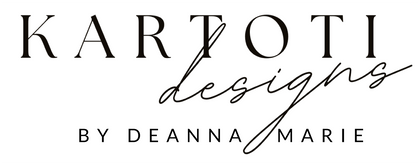You’ve submitted your first pitch. Maybe even landed a response. Now comes the part no one really teaches you — what to charge.
There’s no standard price list in licensing. That can be freeing… but also wildly confusing.
So let’s break down a few of the most common pricing structures you’ll come across — and how to navigate them with clarity and confidence.
Royalties: The Long Game
In a royalty agreement, you're paid a percentage of product sales based on how well the item performs in the market. That percentage — and what it’s based on (retail price, wholesale price, or net sales) — is determined by the contract and varies by company.
Upside: If the product sells well, you’ll receive ongoing payments over time, creating a stream of passive income.
Downside: Payments may be delayed and are never guaranteed — they depend on sales performance.
When to consider it:
-
You're working with an established brand or strong retail partner
-
The product has long-term sales potential
-
You’re comfortable waiting for periodic payments (often quarterly)
Flat Fees: Clear & Simple
A flat-fee license means you're paid a one-time, agreed-upon amount for the use of your artwork for a specified amount of time and for a specified product group. The company gets permission to use your design under clearly defined terms — such as product type, duration, and territory — but you retain ownership of the art unless stated otherwise.
Upside: You receive guaranteed payment up front, regardless of how the product sells.
Downside: You won’t earn more if the product is wildly successful.
When to consider it:
-
You want fast, predictable income
-
The project is small, limited in scope, or short-term
-
The company has a limited budget and low-risk production
Licensing Fee + Royalties: Best of Both Worlds
This structure blends an up-front payment with the potential for royalties later. Often, that initial payment is an advance against royalties, meaning you’ll begin receiving royalties only after the advance amount has been met through sales.
Upside: Immediate income plus ongoing potential — great for larger projects or established companies.
Downside: If the product underperforms, the royalties may never exceed the advance.
When to consider it:
-
You're licensing to a company with wide distribution
-
You want both up-front security and long-term upside
-
You’re licensing a collection or full body of work
Buyouts: Full Transfer of Rights
A buyout occurs when you sell all rights to your artwork. Think of it like selling a house — once ownership changes hands, you no longer have control over how it’s used. In a buyout, the company typically gains full copyright, and you cannot license or reuse the design in the future.
Because this is a permanent transfer of ownership, the price should reflect the full value of the design — much higher than a typical license.
Ask before signing:
-
Will I retain any rights, or is this a full buyout?
-
Is the company asking for copyright ownership?
-
What’s the intended use, and is this a fair valuation?
Only consider buyouts when you’re fully comfortable parting with the design forever.
Exclusive vs. Non-Exclusive Licensing
An exclusive license gives the company sole rights to use your design within the agreed terms — usually a specific product type, time frame, or industry. You cannot license the same artwork elsewhere in that category during the term.
A non-exclusive license means you retain the ability to license the same artwork to other companies, even within the same category. These are typically priced lower, since the value to the company is shared.
When reviewing a contract, look closely at the scope, exclusivity, territory, and duration — each affects the price you should charge.
So… What’s the Right Price?
That depends on:
-
What the company is asking for (usage, exclusivity, timeline)
-
How widely the product will be distributed
-
Whether you retain copyright and usage rights
-
Your current goals and what feels fair
You don’t need to have all the answers from day one. Start by asking good questions, understanding your rights, and being honest with yourself about what feels aligned.
Final Thought
Pricing your art isn’t just about picking a number — it’s about knowing the value of your creativity and protecting it with clarity. Whether you license for a flat fee, royalties, or something in between, the key is understanding your options and making choices that support your business and your boundaries.
And remember: your art isn’t just beautiful — it’s valuable. And you deserve to be paid accordingly.
— Deanna Marie

PITCHING EMAIL SWIPE FILES FOR SURFACE PATTERN DESIGNERS
Confidently pitch your work to companies with ready-to-send email templates.
Get Them Here


